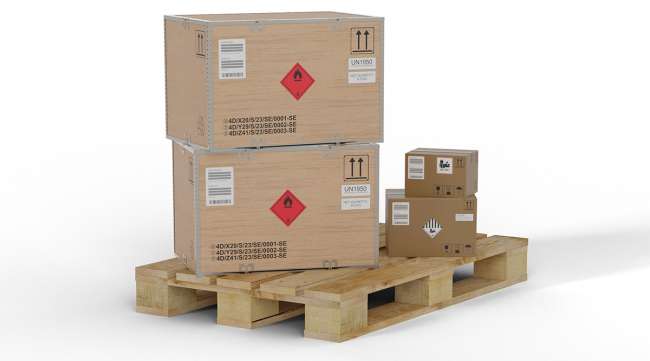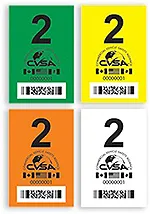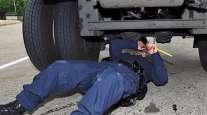Senior Reporter
CVSA Inspections Find Violations in 30% of Hazmat Packages

[Stay on top of transportation news: Get TTNews in your inbox.]
Commercial Vehicle Safety Alliance inspectors found violations with more than three of every 10 hazardous materials/dangerous goods packages inspected during a five-day unannounced special enforcement initiative June 12-16.
In all, CVSA inspectors checked 8,395 hazmat/dangerous goods packages during the “Road Blitz” enforcement effort, finding violations with 2,578 packages — of which 701 were out-of-service violations.
A total of 37 law enforcement jurisdictions in the United States and Canada checked 7,572 commercial motor vehicles transporting hazmat/dangerous goods during this year’s Road Blitz.
Vehicles that had out-of-service hazmat/dangerous goods violations were removed from roadways until those violations could be corrected. Vehicles that passed a North American Standard Level I Inspection without any critical inspection violations or specification cargo tank vehicle violations were eligible to receive a CVSA decal and permitted to continue to their destination.

Example of CVSA decals (CVSA)
The transportation of hazmat/dangerous goods demands rigorous training and heightened compliance requirements, according to CVSA.
“For motor carriers and drivers, safely transporting HM/DG is imperative to the safety of the driver, the public and the environment,” CVSA said. “For inspectors, inspecting vehicles transporting HM/DG is a complex and detailed process that involves safely looking for any leaking materials or unsecured HM/DG cargo, and checking shipping papers, placarding, marking, labeling, packaging and loading compliance.”
The annual unannounced Road Blitz is intended to spotlight the importance of the programs, processes and regulations associated with the safe transportation of hazmat/dangerous goods. It also is intended to recognize safety-compliant hazmat drivers, motor carriers, manufacturers and shippers.
The nine classes of hazmat and dangerous goods range from explosives and flammable liquids, gases and solids, to toxic and infectious substances and radioactive materials.

Ryan Manthir of Shell Global Solutions and Michael Grahe of Navistar discuss the future of the internal combustion engine. Tune in above or by going to RoadSigns.ttnews.com.
In the United States 6,123 vehicles and 6,722 hazmat packages were inspected during the five-day Road Blitz (2,658 non-bulk packages, 3,256 cargo tank packaging and 808 other bulk packaging). Inspectors identified 2,096 hazmat violations, of which 538 were out-of-service violations.
Inspectors also discovered eight undeclared packages. According to the Pipeline and Hazardous Materials Safety Administration, each year approximately 1,500 transportation incidents occur when undeclared hazardous materials are shipped.
In Canada, 1,449 vehicles and 1,673 dangerous goods packages were inspected during the five days of the Road Blitz (799 small means of containment, 690 highway tank packaging and 184 other large means of containment). Inspectors discovered 482 dangerous goods violations, of which 163 were out-of-service violations.
Last year, commercial motor vehicle inspectors inspected 6,204 vehicles transporting and 6,668 hazmat/dangerous goods packages in Canada and the United States during a five-day unannounced hazmat/dangerous goods inspection and enforcement initiative. The total number of violations was 1,774.
The Road Blitz is an annual unannounced inspection and enforcement initiative with participation from CVSA member jurisdictions in North America. It is supported by PHMSA and the Federal Motor Carrier Safety Administration and Transport Canada. The initiative was adopted by the CVSA Hazardous Materials Committee, which provides technical hazmat/dangerous goods guidance and assistance to government and industry in an effort to reduce incidents and encourage uniformity and consistency in the application of the regulations.
Want more news? Listen to today's daily briefing below or go here for more info:




